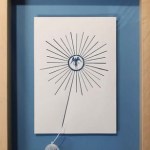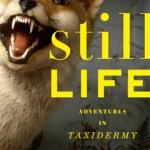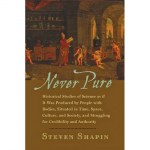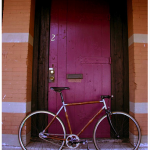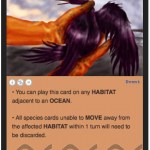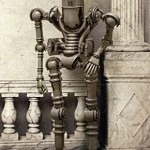
On Tuesday my friend John O, neuroscientist and social media outreach officer, gave a five-minute talk called "You've Been Scienced: Communicating Military Science and Technology with Social Media" at Gov 2.0 Expo 2010. Take my word for it: some things that seem obvious to researchers (like collaboration) aren't exactly routine in government bureaucracy. But the underlying message of this talk is really that blogging about science gets the public's attention - something all of us here at Sb can vouch for.
Edge.org has invited comments on Craig Venter's synthetic bacterium from thinkers like Freeman Dyson, George Dyson, and our very own PZ Myers. Nassim Taleb is particularly pessimistic:
If I understand this well, to the creationists, this should be an insult to God; but, further, to the evolutionist, this is certainly an insult to evolution. And to the risk manager/probabilist, like myself & my peers, this is an insult to human Prudence, the beginning of the mother-of-all exposure to Black Swans. Let me explain.
Evolution (in complex systems) proceeds by undirected, convex bricolage or…
An email from reader Jake prompted me to repost this look at Peter Callesen, originally posted back in 2007. Enjoy!
Angel, 2005
paper and glue in artist made frame
Peter Callesen
This beautifully written essay at Cabinet of Wonders, Mechanical Thinking and the Human Soul, includes some amazing sculptures by paper artist Peter Callesen. Callesen's A4 papercut series are razored from a sheet of paper and assembled, still tethered umbilically to their mother sheet, yet folded and glued into a 3D shape that responds to the original 2D negative space they departed.
Halfway through, (detail),…
Here's another interesting summer reading prospect for BioE-philes: Still Life: Adventures in Taxidermy by Melissa Milgrom. From the New York Times review:
The best chapter in "Still Life" by far is the one in which Ms. Milgrom visits with the fascinating and foul-mouthed British artist Emily Mayer, the woman who is Mr. Hirst's taxidermist. She's the woman who, we learn, "repairs the sharks, preserves the grizzlies, assembles the skeletons, and casts the cow heads for his multimillion-dollar artworks." Ms. Mayer is a Tim Burtonesque perfectionist: "I can't have a piece for Damien discolor in…
Apparently the Republicans learned nothing from Change.gov and the White House's problematic experiments with crowdsourcing, because they've now invited web-based public input to shape their 2010 party platform. According to Dana Milbank, so far, the suggestions include such gems as "A 'teacher' told my child in class that dolphins were mammals and not fish! And the same thing about whales! We need TRADITIONAL VALUES in all areas of education. If it swims in the water, it is a FISH. Period! End of Story." Mmmmkay.
Unless the commenter uses a giveaway pseudonym, it's tough to tell if such…
Never Pure: Historical Studies of Science as if It Was Produced by People with Bodies, Situated in Time, Space, Culture, and Society, and Struggling for Credibility and Authority: this could be awesome, or very very bad. I can't wait to find out.
Seen in Cambridge, MA: it appears to be male and female symbols with radiation symbols inside them. Anyone seen anything like this around?
This is my current favorite song, by the underrated band Fanfarlo. The lyrics, which remind me of Roswell crossed with Spoon River Anthology, are a touching portrayal of the eternal plight of the social misfit. But the video is exactly what we'd have gotten if the Dharma initiative had set up its own music television station. So in honor of last night's long-awaited and poignant end to LOST, here's "Harold T. Wilkins, or How to Wait for a Very Long Time."
Lyrics (from here)
You've been packing your bags for the tenth time
You've been up on the roof again
And you're biding your time but it's…
Ok, maybe we're not quite there yet - but Panda Bicycles is making bikes out of bamboo. These partly renewable, lightweight bikes are striking, to say the least - though they're not cheap. But if you really want to make a statement with your bike, this is one way to go. . .
Thanks to reader Linda for the link!
As you may know, the Phylo (Phylomon) project is crowdsourcing a collection of ecology-based trading and gaming cards, in the hopes of supplying kids with a more engaging way of learning and thinking about their environment. And here's a timely addition: the Oil Spill, with very nice artwork by Stephanie Tan. Scientist-artist types: have ideas, or artwork, to contribute to Phylomon? Check out their website for more info!
From a post by Erin Fitzgerald, a DoD Science Policy Fellow who consulted on the design of Mattel's new "Computer Engineer Barbie:"
It might seem silly to get excited about a new Barbie doll. But, to me, she will help reinforce in math-loving little girls that they, like Barbie, can grow up to be computer engineers. It has been well documented that in recent years far fewer women are pursuing computer science degrees, so such role models are very important. What Computer Engineer Barbie will do, I think, is broaden the realm of not only what is possible, but what feels accessible--being…
This is the clever label for Chateau Skulls, a grenache blend from south Australia. Wikipedia sez,
The label is an original artwork by István Orosz (b. 24 October 1951; Kecskemét) Hungarian painter, printmaker, graphic designer and animated film director, is known for his mathematically inspired works, impossible objects, optical illusions, double-meaning images and anamorphoses. The geometric art of István Orosz, with forced perspectives and optical illusions, has been compared to works by M. C. Escher."
I blogged about Istvan Orosz earlier, in this post on anamorphosis.
From Mechanical Brides of the Uncanny by Edward Bateman
In "Mechanical Brides of the Uncanny," artist Edward Bateman creates images that explore photography's role as historical evidence. Presented as a collection of discovered carte de visites, this book documents a forgotten age of mechanical wonders. Carte de visites were an immensely popular form of photography in the last half of the nineteenth century. They were widely traded and collected, with subjects ranging from portraits of everyday people to those of luminaries. Bateman uses this history to question the idea that all…
Der Mensch als Industriepalast [Man as Industrial Palace] from Henning Lederer on Vimeo.
So awesome! Fritz Kahn's poster reimagined as an animation by Henning Lederer. Via Bora.
They're using DNA tests for everything now - even to catch canine vandals and their miscreant owners.
Robert Frost was right: good forensics make good neighbors.
Somebody in charge of pulling flickr illustrations for Wired's website has a good eye - they used this photo by Stephen Hampshire. A quick visit to flickr, and it turns out the photo is of Hampshire's homemade version of a DIY project originally described by Neil Fraser: a wooden cube brain map/puzzle. Fraser summarized his creation thus:
Last month I took a left-right MRI scan, reconstructed it, and rerendered top-bottom and front-back scans. It was interesting to manipulate the data and extract information which while previously present, was not previously visible. Another method to…
Cornelia Hesse-Honegger's beautiful book Heteroptera is one of my most treasured natural illustration collections. Unfortunately, it seems to be out of print now, but Wired recently compiled a gallery of her work, and I highly recommend a visit.
The subtle and not-so-subtle asymmetries on Hesse-Honegger's specimens, like the cyst-eyed cicada above, are latently sinister: these are insects collected near Three Mile Island, Chernobyl, nuclear plants, and sites downwind of nuclear test grounds. Are the defects Hesse-Honegger catalogs a telltale sign of environmental contamination? Or is she…
I ran across first one, then two articles on the scientific benefits of failure in the past few weeks: this one by Jonah Lehrer for Wired (originally out in December), and this one by W. Barksdale Maynard for the April issue of the Princeton Alumni Weekly. Odd - or maybe not so odd; with the economy crashing down, oil rigs blowing up, etc., it's awfully reassuring to reflect on the good side of screwups.
Lehrer's piece begins by debunking an overly romantic and simplistic view of science, in which experiments come out the way you expect (ha):
Dunbar came away from his in vivo studies with an…
A German home improvement company turns an old apartment building into a modern wonder cabinet, as part of an ad campaign: first they covered the facade with a flock of shoes (Dr. Isis must have been their muse) and then they installed concept art throughout the whole thing (some of it nuts, and some of it pretty remarkable). They won a 2009 Mobius Award for their work. Check it out:
I think we'd all like to have the room with the giant air mattress/bubble in it. Mmmmmmm, sleeping on a giant bubble.
Now that's bioephemera: my friend Rhett sent me a link to the work of Fulvio Bonavia, who created a series of eighteen photographs of food reimagined as haute couture. My favorite? The glassy-eyed sardine-link belt. See all eighteen images, and his other work, at his website.
Via Coute Que Coute.
